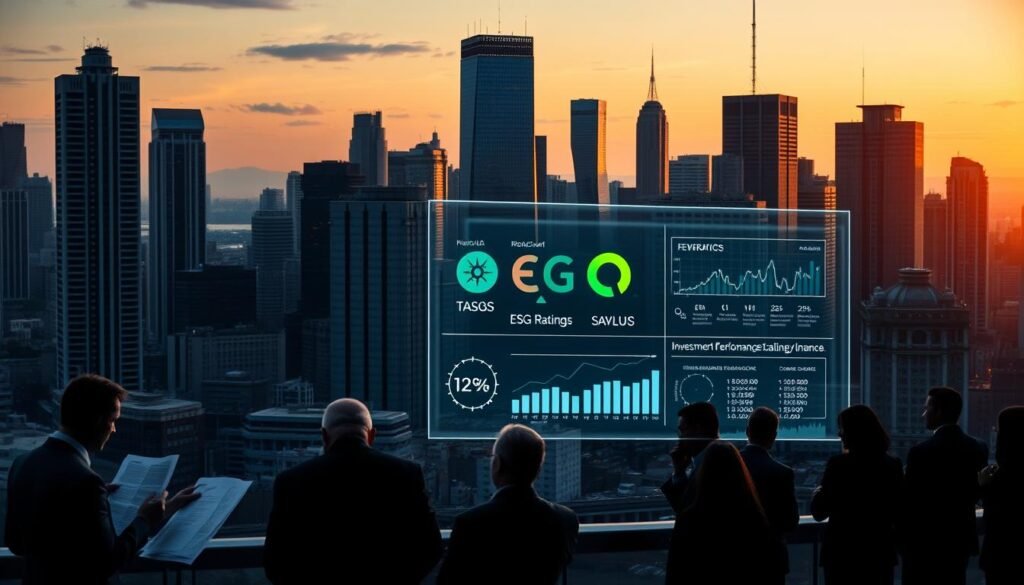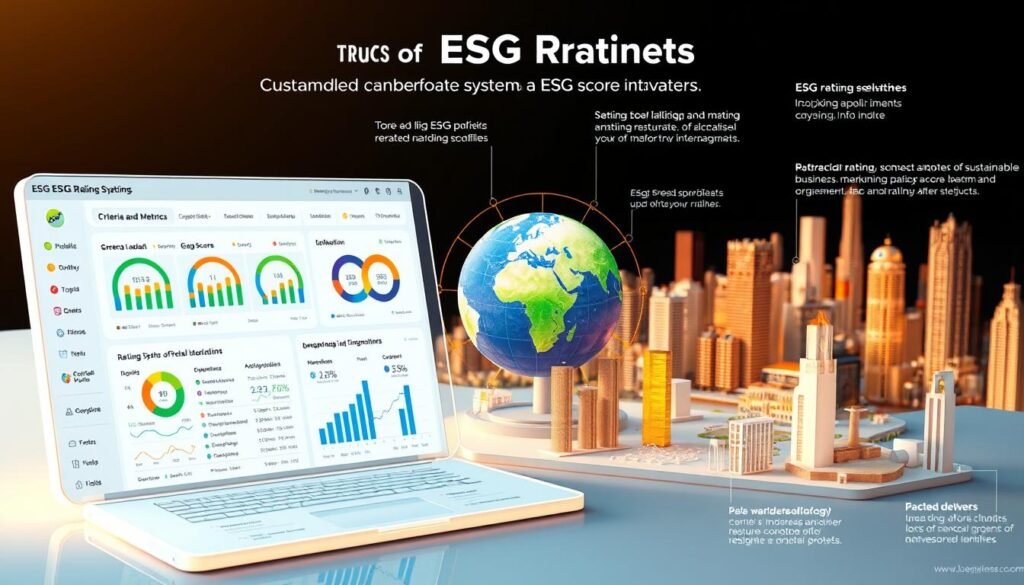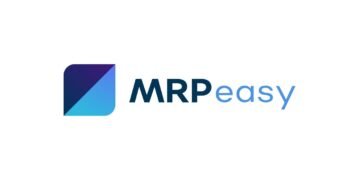Many businesses today face a critical question. Can they succeed by focusing only on financial results? The answer is becoming clear.
Modern organizations need a broader approach. They must consider environmental impact, social responsibility, and strong governance. This framework helps manage risks and find new opportunities.
Stakeholders now expect more from companies. Investors look for sustainable practices. Employees want to work for responsible organizations. Customers prefer brands that align with their values.
This approach has evolved from earlier movements. It now plays a vital role in attracting capital and driving performance. Transparency and accountability are no longer optional.
Businesses across industries are implementing these strategies. They understand that adopting these practices is urgent. It helps them stay competitive and build resilience for the future.
Key Takeaways
- Modern businesses need to look beyond financial performance
- Environmental, social and governance factors manage risks and opportunities
- Multiple stakeholders now expect responsible business practices
- This framework has evolved from earlier sustainability movements
- Transparent reporting attracts investment and drives performance
- Companies across industries are implementing these strategies
- Adopting these practices is essential for long-term competitiveness
Understanding Corporate ESG: A Comprehensive Framework
Today’s business leaders must navigate a complex landscape. They need a clear roadmap for sustainable success. This framework provides that guidance.
What ESG Stands For: Environmental, Social, and Governance
Environmental factors address our planet’s health. Companies measure their carbon footprint and resource use. They work to reduce waste and pollution.
Social elements focus on people and communities. This includes fair labor practices and employee rights. It also covers product safety and data privacy.
Governance ensures proper oversight and ethical behavior. Boards establish transparent decision-making processes. They create accountability throughout the organization.
Why Corporate ESG Matters for Modern Businesses
Strong environmental practices reduce regulatory risks. They also lower operational costs through efficiency. This directly impacts financial performance.
Social responsibility builds brand loyalty and trust. Employees stay longer at companies that value their rights. Customers prefer brands that share their values.
Good governance prevents costly legal issues. It helps attract long-term investment from careful investors. These factors combine to create durable companies.
Key Stakeholders in the ESG Ecosystem
Investors use ESG criteria to evaluate companies. They want to understand potential risks and opportunities. Their investment decisions increasingly reflect these values.
Employees seek workplaces that match their principles. They consider social issues and management quality when choosing employers. This affects recruitment and retention.
Communities expect businesses to be good neighbors. They want companies that create jobs without harming the environment. Local support can make or break operations.
Supply chain partners face growing scrutiny too. Companies must ensure their vendors meet basic standards. This is especially important in developing economies.
The Three Pillars of Corporate ESG Implementation
Successful sustainability strategies rest on three interconnected foundations. These pillars support long-term business resilience and value creation.
Each element addresses different aspects of organizational performance. Together they form a comprehensive approach to responsible business practices.
Environmental Stewardship: Climate Change and Beyond
Environmental efforts extend far beyond basic compliance. Companies now manage their entire ecological footprint.
Climate change initiatives reduce greenhouse gas emissions. Many organizations set science-based targets for carbon reduction.
Resource stewardship conserves water and energy. Waste management programs minimize landfill contributions.
Some companies excel beyond requirements. Patagonia donates 1% of sales to environmental causes. IKEA invests heavily in renewable energy projects.
These practices reduce operational costs significantly. They also mitigate regulatory and physical risks.
Social Responsibility: Human Capital and Community Impact
Social elements focus on people inside and outside the organization. Employee wellbeing directly affects productivity and innovation.
Fair wages and benefits attract top talent. Engagement programs boost retention and satisfaction.
Community involvement builds local support and brand reputation. Microsoft’s skills training programs help workers adapt to technology changes.
Starbucks offers college education benefits to employees. These investments create loyal workforces and positive brand associations.
Strong social performance reduces turnover costs. It also minimizes reputational risk from labor issues.
Governance Structures: Transparency and Accountability
Effective governance ensures ethical decision-making throughout the organization. Board diversity brings varied perspectives to leadership.
Transparent disclosure provides stakeholders with clear information. Regular reports show progress against sustainability goals.
Executive compensation often links to environmental and social targets. This alignment ensures leadership commitment to broader objectives.
Shareholder rights protect investor interests. Ethical business practices prevent legal complications and financial penalties.
These structures create accountability at all levels. They form the backbone of credible sustainability efforts.
These three pillars work together seamlessly. Environmental efforts reduce ecological impact. Social programs build human capital. Governance ensures proper oversight.
This integrated approach manages multiple business risks. It also identifies new opportunities for growth and innovation.
The following sections will explore practical implementation steps. These will help organizations build effective sustainability strategies.
The Evolution of ESG: From EHS to Modern Frameworks
Current environmental and social accountability standards trace their origins to earlier regulatory movements. This progression shows how business responsibility has transformed over decades.
The framework we know today developed through several distinct phases. Each stage built upon previous lessons and expanded the scope of corporate responsibility.
Historical Roots: Environment, Health and Safety (EHS)
In the 1980s, companies focused mainly on Environment, Health and Safety compliance. Regulations forced businesses to address pollution and workplace safety.
These early efforts centered on reducing environmental harm and protecting employees. Companies implemented basic measures to meet legal requirements.
The approach was largely reactive rather than strategic. Organizations responded to regulations rather than leading change.
Corporate Sustainability and Social Responsibility Movements
The 1990s brought a shift toward broader sustainability concepts. Companies began talking about their environmental footprint and community impact.
This period saw the rise of corporate philanthropy and social programs. Many businesses launched initiatives to improve their public image.
Unfortunately, some efforts represented greenwashing rather than genuine change. Companies made environmental claims without substantial action.
Stakeholders grew skeptical of marketing-driven sustainability promises. They demanded more transparency and measurable results.
The 2004 UN Report and Mainstream Adoption
A major turning point came with the 2004 United Nations report. This document helped popularize the comprehensive framework globally.
The report emphasized that environmental, social and governance factors affect long-term performance. It showed how these elements connect to financial results.
Rating agencies began developing more sophisticated evaluation methods. They created systems to assess company performance across multiple dimensions.
Investors started considering these factors when making decisions. They recognized that good practices could indicate better management and reduced risks.
The movement evolved from reactive compliance to proactive strategy. Companies now integrate these considerations into core business operations.
This shift created new opportunities for organizations that embrace comprehensive responsibility. It changed how businesses approach their relationship with the environment and society.
ESG Investing: How Corporate Performance Attracts Capital
Capital markets increasingly reward companies demonstrating responsible practices. Strong performance across environmental, social and governance factors directly influences investment decisions and capital access.
Modern investors evaluate organizations through multiple performance lenses. They consider both financial returns and broader societal impacts when allocating funds.
ESG vs. SRI vs. Impact Investing: Key Differences
These investment approaches share common goals but differ in focus and methodology. Understanding these distinctions helps companies target appropriate investors.
ESG investing integrates environmental, social and governance factors into financial analysis. It seeks competitive returns while managing sustainability risks.
SRI (Socially Responsible Investing) uses ethical screens to exclude certain industries. It typically avoids tobacco, firearms, or fossil fuel companies based on moral criteria.
Impact investing prioritizes measurable social or environmental benefits. Financial returns become secondary to achieving specific positive outcomes.
The Role of Institutional Investors and Rating Agencies
Large investment firms drive much of the capital allocation toward sustainable companies. They use comprehensive evaluation systems to assess organizational practices.
Rating agencies provide independent assessments of company performance. Their esg rating systems examine hundreds of data points across multiple categories.
These evaluations influence billions in investment decisions annually. Funds often use these scores to screen potential investments and build portfolios.
Green Bonds, ETFs, and ESG Investment Vehicles
Specialized financial instruments have emerged to support sustainable investing. Green bonds fund specific environmental projects like renewable energy installations.
ESG ETFs (Exchange-Traded Funds) bundle companies meeting specific sustainability criteria. They offer diversified exposure to organizations with strong practices.
Sustainable mutual funds apply similar screening methodologies. They typically exclude companies with poor human rights records or excessive greenhouse gas emissions.
The growth of these vehicles demonstrates market demand for responsible options. Assets in ESG funds have multiplied in recent years, reflecting investor preferences.
Clear disclosures and comprehensive reporting become essential for capital access. Companies must effectively communicate their performance and improvement strategies.
This transparency creates opportunities for better financing terms and investor relationships. The following sections will explore reporting frameworks and scoring systems in detail.
Corporate ESG Reporting and Disclosure Requirements
Standardized reporting systems enable consistent measurement of organizational impact. These frameworks help businesses communicate their progress clearly to various stakeholders.
Transparent disclosure builds trust with investors and communities. It also helps organizations track their own improvement over time.
Major Reporting Frameworks: GRI, SASB, and TCFD
The Global Reporting Initiative (GRI) offers comprehensive sustainability reporting standards. Many organizations worldwide use these guidelines for their disclosures.
SASB standards focus on industry-specific metrics that matter most to investors. This approach helps companies report data relevant to their particular sector.
The Task Force on Climate-related Financial Disclosures (TCFD) provides climate risk reporting guidance. It helps businesses address environmental factors in financial contexts.
These frameworks help structure reports and improve scores. They provide consistent methodologies for measuring performance.
Regulatory Landscape: CSRD and SFDR Standards
The Corporate Sustainability Reporting Directive (CSRD) affects European Union companies. It expands sustainability reporting requirements for many organizations.
The Sustainable Finance Disclosure Regulation (SFDR) governs financial market participants. It requires transparency about sustainability risks in investment products.
These regulations standardize disclosures across industries. Companies must adapt to evolving compliance requirements.
Navigating these standards presents challenges for many businesses. However, they create more comparable data for stakeholders.
Best Practices for Transparent ESG Disclosure
Effective reporting combines both qualitative and quantitative information. Numbers provide measurable results while stories explain context.
Organizations should align reports with stakeholder needs and expectations. This approach ensures the data provided actually serves its audience.
Authentic reporting avoids greenwashing by backing claims with evidence. Companies should demonstrate concrete actions behind their statements.
Regular updates show continuous improvement rather than one-time efforts. This demonstrates genuine commitment to sustainability goals.
Good disclosure practices connect directly to overall strategy and performance measurement. They turn abstract concepts into actionable insights.
Understanding ESG Scores and Rating Systems
Organizations face growing pressure to measure their sustainability efforts. Independent agencies provide scores that evaluate company practices. These ratings help stakeholders assess real performance.
Understanding these scoring systems is crucial for modern businesses. They influence investment decisions and market reputation. Companies must learn how to interpret and improve their ratings.
How Major Agencies Calculate ESG Scores
Leading firms like MSCI and Sustainalytics use proprietary methods. They analyze public disclosures, media reports, and third-party data. Each agency weighs factors differently based on their criteria.
MSCI examines over 30 key issues across industries. Their system focuses on risk management and opportunity assessment. Scores range from AAA (leader) to CCC (laggard).
Sustainalytics uses a 0-100 scale with lower scores being better. They evaluate how well companies manage material issues. Their research covers more than 15,000 organizations worldwide.
Both agencies consider industry-specific risks and opportunities. A technology company faces different challenges than an energy business. This context matters greatly in final scoring.
Interpreting Different Scoring Methodologies
Rating scales vary significantly between agencies. Some use letter grades while others prefer numerical scores. This diversity can create confusion for companies and investors.
Scores reflect both performance and risk levels. Higher ratings typically indicate better practices and lower risks. They signal strong management of environmental and social issues.
Investors use these scores to compare companies within industries. They help identify leaders and laggards in sustainability performance. This information guides capital allocation decisions.
Media coverage and controversies can dramatically impact scores. Negative news about labor rights or community relations often lowers ratings. Positive developments can improve them over time.
Improving Your Company’s ESG Rating
Enhancing your score requires focused effort across multiple areas. Start by understanding each agency’s specific criteria and weighting. Benchmark against industry peers to identify improvement opportunities.
Strengthen disclosure practices with transparent reporting. Provide clear data about environmental impact and social programs. Share both successes and challenges honestly.
Address material issues relevant to your industry. For manufacturers, this might mean reducing emissions. Technology companies might focus on data privacy and diversity.
Engage with rating agencies to ensure they understand your programs. Correct any misinformation in their assessments promptly. This proactive approach can prevent scoring errors.
Connect score improvement to broader strategy and stakeholder engagement. Better ratings often follow genuine commitment to responsible business practices. They reflect real progress rather than superficial changes.
Implementing Effective Corporate ESG Strategies
Moving from planning to action requires careful execution. Successful programs embed responsibility throughout the organization.
They transform abstract goals into daily practices. This creates real environmental and social benefits.
Building Cross-Functional ESG Teams
Diverse teams drive comprehensive strategy development. Include members from operations, finance, and human resources.
Legal and compliance experts help navigate regulatory requirements. Marketing professionals communicate progress to external groups.
Assign clear roles and responsibilities for accountability. Cross-departmental collaboration ensures all perspectives are considered.
Regular meetings maintain momentum and address challenges. This structure supports coordinated implementation across the company.
Integrating ESG into Core Business Operations
Connect sustainability goals to everyday decisions. Procurement teams can prioritize ethical suppliers.
Product development might focus on reducing environmental impact. Manufacturing could implement energy efficiency measures.
Human resources may enhance diversity and inclusion programs. Every department contributes to overall performance.
This integration makes responsibility part of normal business. It moves beyond separate initiatives to embedded practices.
Measuring and Tracking ESG Performance Metrics
Establish clear metrics aligned with material issues. Track progress using standardized frameworks.
Software solutions help collect and analyze data efficiently. They provide real-time insights into performance trends.
Regular reports keep stakeholders informed about achievements. Transparency builds trust with investors and communities.
Continuous improvement becomes possible with accurate measurement. Organizations can adjust strategies based on actual results.
This approach turns commitment into measurable outcomes. It demonstrates real progress toward sustainability goals.
Conclusion: The Future of Corporate ESG in Sustainable Business
Tomorrow’s market leaders will be those who integrate purpose with profit effectively. This approach manages multiple risks opportunities while creating lasting value.
Standardization and regulation continue to evolve. Technology enables better transparency in reporting and accounting. Companies must focus on authentic impact beyond metrics.
Your journey should emphasize action over paperwork. Connect social governance efforts to net zero goals and equity initiatives. View this as continuous improvement, not a checklist.
Embrace these practices as core to sustainable success. They build resilience and create competitive advantage for the future.
FAQ
What does ESG stand for in business contexts?
ESG represents Environmental, Social, and Governance criteria. These factors help investors and stakeholders evaluate a company’s sustainability and ethical performance beyond traditional financial metrics.
Why should companies prioritize ESG implementation?
Companies benefit through improved risk management, enhanced brand reputation, and better access to capital. Strong performance attracts investors who increasingly consider sustainability factors in their decisions.
How do ESG scores differ between rating agencies?
Agencies like MSCI, Sustainalytics, and S&P Global use different methodologies and weightings. Companies should understand each agency’s focus areas to improve their ratings effectively.
What are the major ESG reporting frameworks available?
Leading frameworks include the Global Reporting Initiative (GRI), Sustainability Accounting Standards Board (SASB), and Task Force on Climate-related Financial Disclosures (TCFD). Each serves different reporting needs and stakeholder requirements.
How can companies integrate ESG into their core operations?
Successful integration requires cross-functional teams, executive commitment, and embedding sustainability considerations into decision-making processes across all business units.
What’s the difference between ESG investing and impact investing?
ESG investing focuses on risk management and sustainable performance, while impact investing targets specific social or environmental outcomes alongside financial returns.
How do regulations affect ESG disclosure requirements?
Regulations like the EU’s Corporate Sustainability Reporting Directive (CSRD) and Sustainable Finance Disclosure Regulation (SFDR) mandate specific disclosures, creating standardized reporting requirements across regions.
What metrics are most important for tracking ESG performance?
Key metrics include greenhouse gas emissions, diversity statistics, employee turnover rates, board diversity, and community investment data. The specific metrics vary by industry and stakeholder priorities.







